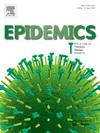Estimating the effective reproduction number from wastewater (Rt): A methods comparison
IF 2.4
3区 医学
Q2 INFECTIOUS DISEASES
引用次数: 0
Abstract
Background
The effective reproduction number (Rt) is a dynamic indicator of current disease spread risk. Wastewater measurements of viral concentrations are known to correlate with clinical measures of diseases and have been incorporated into methods for estimating the Rt.
Methods
We review wastewater-based methods to estimate the Rt for SARS-CoV-2 based on similarity to the reference case-based Rt, ease of use, and computational requirements. Using wastewater data collected between August 1, 2022, and February 20, 2024, from 205 wastewater treatment plants across New York State, we fit eight wastewater Rt models identified from the literature. Each model is compared to the Rt estimated from case data for New York at the sewershed (wastewater treatment plant catchment area), county, and state levels.
Results
We find a high degree of similarity across all eight methods despite differences in model parameters and approach. Further, two methods based on the common measures of percent change and linear fit reproduced the Rt from case data very well and a GLM accurately predicted case data. Model output varied between spatial scales with some models more closely estimating sewershed Rt values than county Rt values. Similarity to clinical models was also highly correlated with the proportion of the population served by sewer in the surveilled communities (r = 0.77).
Conclusions
While not all methods that estimate Rt from wastewater produce the same results, they all provide a way to incorporate wastewater concentration data into epidemic modeling. Our results show that straightforward measures like the percent change can produce similar results of more complex models. Based on the results, researchers and public health officials can select the method that is best for their situation.
估计废水的有效再生数(Rt):一种方法的比较
有效繁殖数(Rt)是当前疾病传播风险的动态指标。已知废水中病毒浓度的测量与疾病的临床测量相关,并已被纳入估计Rt的方法中。方法基于与参考病例Rt的相似性、易用性和计算要求,我们综述了基于废水的Rt估计方法。利用2022年8月1日至2024年2月20日期间从纽约州205家污水处理厂收集的废水数据,我们拟合了从文献中确定的8个废水Rt模型。每个模型都与纽约下水道(污水处理厂集水区)、县和州一级的病例数据估计的Rt进行比较。结果尽管在模型参数和方法上存在差异,但我们发现所有八种方法都具有高度的相似性。此外,基于变化百分比和线性拟合的两种常用测量方法可以很好地再现病例数据的Rt,并且GLM可以准确地预测病例数据。模型的输出在不同的空间尺度上存在差异,一些模型对下水道Rt值的估计比县Rt值更接近。与临床模型的相似性也与监测社区下水道服务的人口比例高度相关(r = 0.77)。虽然并非所有从废水中估计Rt的方法都产生相同的结果,但它们都提供了一种将废水浓度数据纳入流行病建模的方法。我们的结果表明,像百分比变化这样简单的度量可以在更复杂的模型中产生类似的结果。根据结果,研究人员和公共卫生官员可以选择最适合他们情况的方法。
本文章由计算机程序翻译,如有差异,请以英文原文为准。
求助全文
约1分钟内获得全文
求助全文
来源期刊

Epidemics
INFECTIOUS DISEASES-
CiteScore
6.00
自引率
7.90%
发文量
92
审稿时长
140 days
期刊介绍:
Epidemics publishes papers on infectious disease dynamics in the broadest sense. Its scope covers both within-host dynamics of infectious agents and dynamics at the population level, particularly the interaction between the two. Areas of emphasis include: spread, transmission, persistence, implications and population dynamics of infectious diseases; population and public health as well as policy aspects of control and prevention; dynamics at the individual level; interaction with the environment, ecology and evolution of infectious diseases, as well as population genetics of infectious agents.
 求助内容:
求助内容: 应助结果提醒方式:
应助结果提醒方式:


